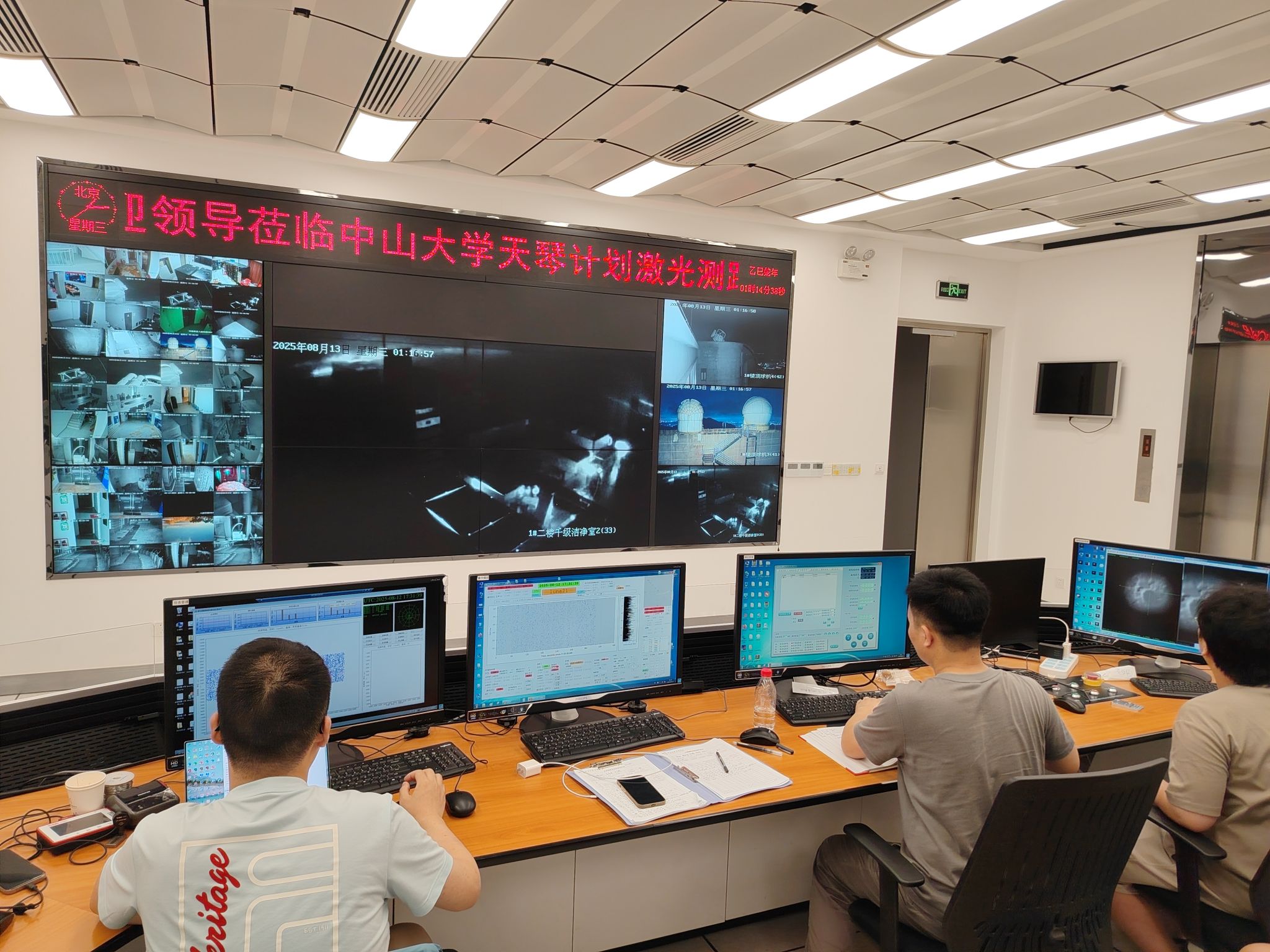Recently, researchers from Sun Yat-sen University (SYSU) successfully detected laser echoes from the Next Generation Lunar Retroreflector-1(NGLR-1), making China the 4th country (after France, Germany and the United States) to achieve this feat.
At 12:37 am (Beijing Time) on August 13, Xida Han and Xianlin Wu from SYSU’s Tianqin Laser Ranging Station, together with their team, detected laser echoes from the next-generation lunar retroreflector NGLR-1, obtaining 17 initial distance measurements before suspending the experiment due to weather conditions. Subsequently, at 5:39 am (Beijing Time), the team recorded another 38 measurements from NGLR-1, confirming the success of the ranging experiment.
The United States and the Soviet Union placed a total of five laser retroreflector arrays on the Moon for lunar ranging in the last century. In 2019, the Tianqin Project team successfully measured signals from all five reflectors, making China the third country in the world to accomplish this experiment. On March 2 this year, the U.S. “Blue Ghost” lunar lander deployed the sixth retroreflector, NGLR-1, on the Moon.
This successful detection marks a new step forward in the Tianqin Project. The Tianqin project was proposed by Professor Jun Luo in 2014 to detect the space gravitational wave, which is expected to deploy a constellation of three satellites equally spaced on a geocentric orbit with a radius of about 105 km in the 2030s.

The observation site



